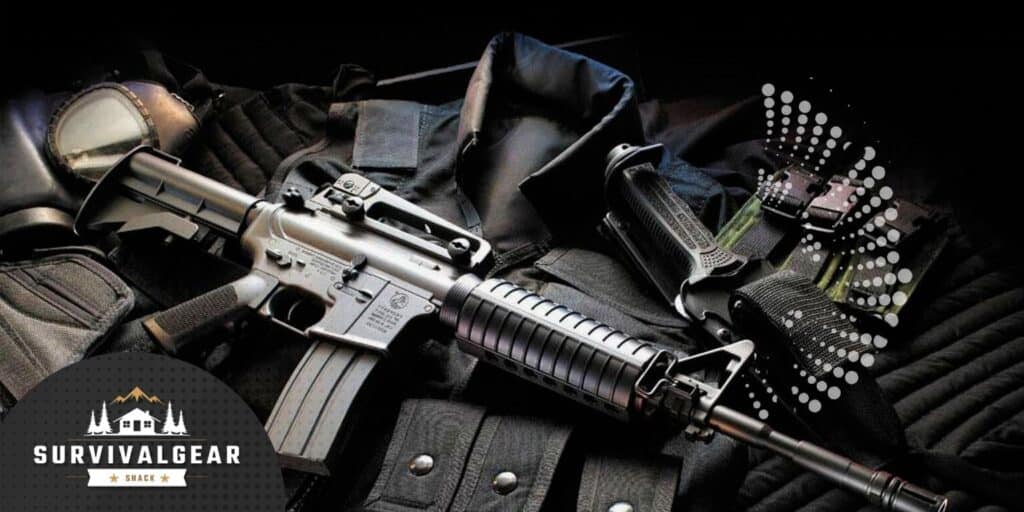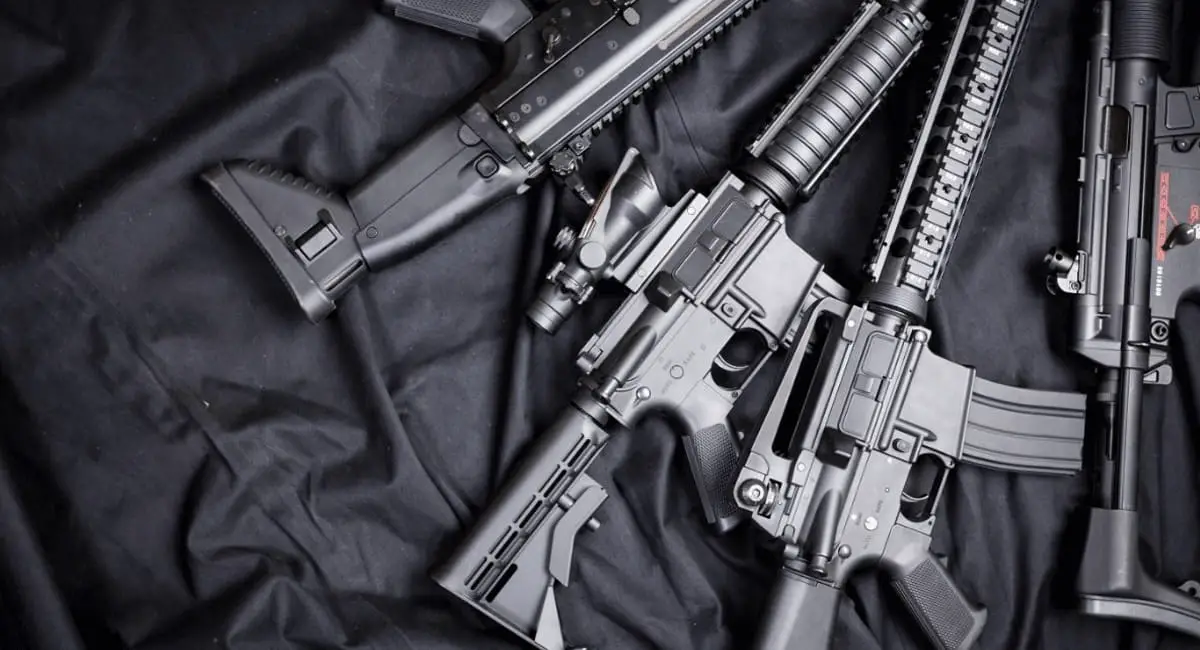Weapons classification is a critical topic in both military and civilian contexts, especially when it comes to understanding the distinctions between different classes of weapons. Class 4 and lower weapons, in particular, have garnered significant attention due to their widespread use and potential implications for security and public safety. In this article, we will explore the nuances of these classifications, shedding light on their definitions, purposes, and regulatory frameworks.
From handguns to rifles, and from shotguns to semi-automatic weapons, the classification of firearms plays a crucial role in shaping laws, policies, and public perception. Understanding the differences between class 4 and lower weapons is essential for anyone interested in firearms, whether for personal protection, sport, or professional use. This article aims to provide a detailed overview of these classifications, ensuring that readers are well-informed about their characteristics and significance.
As we delve into the intricacies of class 4 and lower weapons, we will examine the legal frameworks governing their use, the technological advancements driving their development, and the ethical considerations surrounding their deployment. By the end of this article, you will have a comprehensive understanding of these weapons and their role in modern society.
Read also:Is Teanna Trump Donald Trumps Daughter Unveiling The Truth
Table of Contents
- What Are Class 4 Weapons?
- Overview of Lower Class Weapons
- The Classification System for Firearms
- Legal Framework for Class 4 and Lower Weapons
- Uses of Class 4 Weapons
- Risks and Impacts of Class 4 and Lower Weapons
- Technological Advancements in Firearms
- Ethical Considerations in Weapon Use
- Regulatory Challenges and Solutions
- Future Trends in Weapon Classification
What Are Class 4 Weapons?
Class 4 weapons are a category of firearms that typically include automatic weapons and other highly regulated arms. These weapons are distinguished by their ability to fire multiple rounds with a single trigger pull, making them significantly more powerful than semi-automatic or single-shot firearms. Examples of class 4 weapons include machine guns, short-barreled rifles, and certain types of grenades.
Understanding the classification of class 4 weapons is vital because they are subject to stricter regulations and licensing requirements. In many jurisdictions, owning or possessing such weapons without proper authorization is illegal, reflecting the potential dangers they pose to public safety. The classification of these weapons is based on their design, function, and potential for misuse.
Key Characteristics:
- Automatic firing capability
- Restricted access and ownership
- Highly regulated by national and international laws
Overview of Lower Class Weapons
Class 1 to Class 3 Weapons
Lower class weapons, such as those classified as class 1, 2, and 3, encompass a wide range of firearms that are more accessible to the general public. Class 1 weapons typically include handguns, rifles, and shotguns that do not have special modifications. Class 2 weapons involve firearms with modifications, such as short-barreled shotguns, while class 3 weapons include semi-automatic rifles and certain types of silencers.
These classifications are designed to differentiate between weapons based on their intended use and potential for harm. While lower class weapons are generally less regulated than class 4 weapons, they still require adherence to specific legal and safety standards.
The Classification System for Firearms
The classification system for firearms is a structured framework used to categorize weapons based on their design, function, and potential impact. This system helps governments and regulatory bodies manage the production, distribution, and use of firearms effectively. The classification of weapons into different classes ensures that appropriate measures are taken to safeguard public safety while allowing lawful use of firearms for legitimate purposes.
Read also:Unveiling The Unique Traits Of May 8th Birthday Personality
Factors Influencing Classification:
- Firing mechanism (automatic, semi-automatic, single-shot)
- Barrel length and modifications
- Purpose of the weapon (military, law enforcement, civilian)
Legal Framework for Class 4 and Lower Weapons
The legal framework governing class 4 and lower weapons varies significantly across different countries and regions. In the United States, for example, the National Firearms Act (NFA) and the Gun Control Act (GCA) regulate the possession and transfer of firearms, with specific provisions for class 4 weapons. Similarly, international agreements like the United Nations Protocol Against the Illicit Manufacturing of and Trafficking in Firearms also play a role in shaping global standards.
Understanding the legal requirements for owning or using these weapons is crucial for compliance and safety. Regulations often include background checks, licensing, and registration processes to ensure that only authorized individuals can access these weapons.
Uses of Class 4 Weapons
Military and Law Enforcement Applications
Class 4 weapons are primarily used by military and law enforcement agencies due to their high firepower and effectiveness in combat situations. These weapons are designed to provide superior firepower in scenarios where traditional firearms may not suffice. However, their use is strictly controlled to prevent misuse and ensure accountability.
Common Uses:
- Combat operations
- Tactical operations by special forces
- Law enforcement during high-risk situations
Risks and Impacts of Class 4 and Lower Weapons
While class 4 and lower weapons serve important functions in military and civilian contexts, they also pose significant risks if misused. The potential for accidental discharge, unauthorized access, and criminal use highlights the importance of stringent regulations and safety measures. Additionally, the psychological and social impacts of weapon proliferation can affect communities and individuals alike.
Data from the Bureau of Alcohol, Tobacco, Firearms and Explosives (ATF) indicates that improper handling of firearms contributes to a significant number of accidents and injuries annually. This underscores the need for comprehensive training and education programs for individuals who handle these weapons.
Technological Advancements in Firearms
Technological advancements have transformed the landscape of firearms, introducing innovations that enhance performance, accuracy, and safety. Modern class 4 and lower weapons often incorporate features like smart triggers, biometric authentication, and advanced materials to improve functionality and reduce risks. These advancements reflect the ongoing efforts to balance technological progress with ethical considerations.
Key Innovations:
- Smart gun technology
- Biometric safety mechanisms
- Lightweight materials for increased durability
Ethical Considerations in Weapon Use
The ethical implications of using class 4 and lower weapons extend beyond legal and regulatory frameworks. Ethical considerations involve evaluating the moral responsibility of individuals and organizations that produce, distribute, and use these weapons. Issues such as the impact on human rights, environmental consequences, and the potential for escalation in conflicts are critical factors in this discourse.
Stakeholders in the firearms industry must prioritize ethical practices to ensure that their products are used responsibly and for legitimate purposes. This includes promoting transparency, accountability, and collaboration with regulatory bodies to address emerging challenges.
Regulatory Challenges and Solutions
Regulating class 4 and lower weapons presents several challenges, including balancing public safety with individual rights, addressing cross-border issues, and adapting to technological advancements. These challenges require innovative solutions that involve collaboration between governments, industry stakeholders, and civil society organizations.
Possible Solutions:
- Enhanced international cooperation and information sharing
- Development of standardized regulations for emerging technologies
- Increased investment in research and development of safer firearms
Future Trends in Weapon Classification
The future of weapon classification is likely to be shaped by advancements in technology, evolving security threats, and changing societal norms. As new weapons and technologies emerge, regulatory frameworks must adapt to ensure that they remain effective and relevant. This may involve revising existing classifications, introducing new categories, and enhancing enforcement mechanisms.
Looking ahead, the focus will be on fostering a culture of responsible firearm ownership and use, while addressing the complex challenges posed by modern weapons. By prioritizing safety, ethics, and innovation, stakeholders can create a safer and more secure future for all.
Conclusion
In conclusion, understanding class 4 and lower weapons is essential for anyone involved in the firearms industry or interested in public safety. This article has provided a comprehensive overview of these classifications, highlighting their definitions, uses, risks, and regulatory frameworks. By staying informed and engaged, individuals and organizations can contribute to a safer and more responsible approach to firearm use.
We invite you to share your thoughts and questions in the comments section below. Additionally, feel free to explore other articles on our site for more insights into firearms, technology, and related topics. Together, we can promote a culture of knowledge and responsibility in the realm of weapon classification and use.


